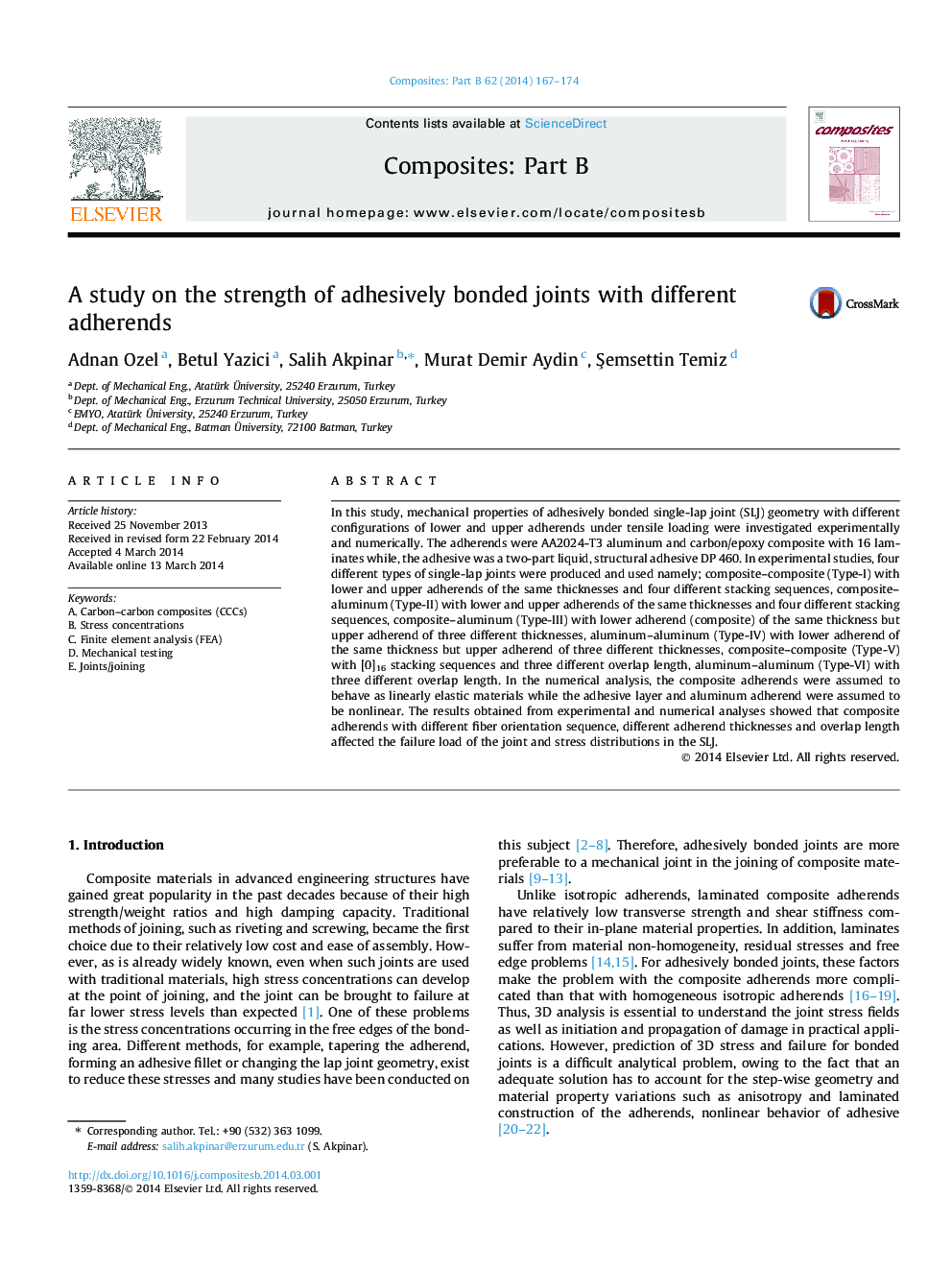| Article ID | Journal | Published Year | Pages | File Type |
|---|---|---|---|---|
| 817676 | Composites Part B: Engineering | 2014 | 8 Pages |
Abstract
In this study, mechanical properties of adhesively bonded single-lap joint (SLJ) geometry with different configurations of lower and upper adherends under tensile loading were investigated experimentally and numerically. The adherends were AA2024-T3 aluminum and carbon/epoxy composite with 16 laminates while, the adhesive was a two-part liquid, structural adhesive DP 460. In experimental studies, four different types of single-lap joints were produced and used namely; composite-composite (Type-I) with lower and upper adherends of the same thicknesses and four different stacking sequences, composite-aluminum (Type-II) with lower and upper adherends of the same thicknesses and four different stacking sequences, composite-aluminum (Type-III) with lower adherend (composite) of the same thickness but upper adherend of three different thicknesses, aluminum-aluminum (Type-IV) with lower adherend of the same thickness but upper adherend of three different thicknesses, composite-composite (Type-V) with [0]16 stacking sequences and three different overlap length, aluminum-aluminum (Type-VI) with three different overlap length. In the numerical analysis, the composite adherends were assumed to behave as linearly elastic materials while the adhesive layer and aluminum adherend were assumed to be nonlinear. The results obtained from experimental and numerical analyses showed that composite adherends with different fiber orientation sequence, different adherend thicknesses and overlap length affected the failure load of the joint and stress distributions in the SLJ.
Keywords
Related Topics
Physical Sciences and Engineering
Engineering
Engineering (General)
Authors
Adnan Ozel, Betul Yazici, Salih Akpinar, Murat Demir Aydin, Åemsettin Temiz,
